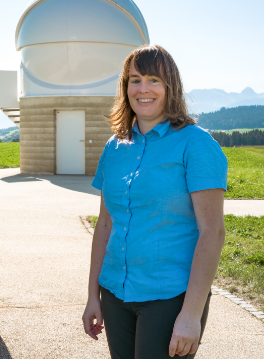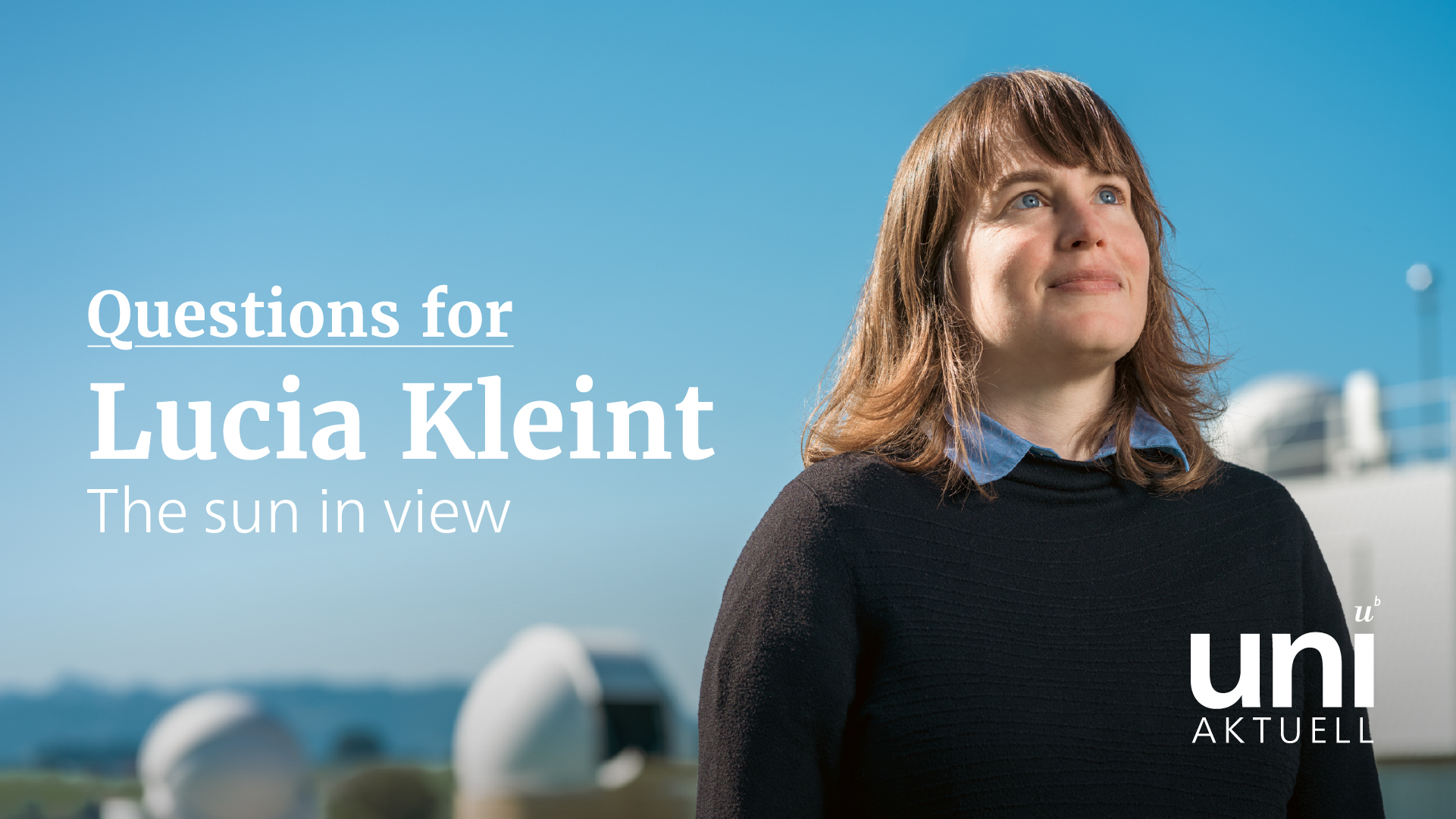Astronomy
The sun in view
Lucia Kleint researches powerful solar storms that can cause major problems on Earth. In a video interview, the active researcher explains why the University of Bern is the perfect place for her research.
In July 2022, the new "Spaceweather" research group was established at the Astronomical Institute of the University of Bern (AIUB) to study the so-called space weather. The group, which was previously based at the University of Geneva, is headed by Lucia Kleint. She is also Vice-Director of the Zimmerwald Observatory, where the orbits of various satellites are determined, space debris and, in future, stars will be studied.
Kleint's "Spaceweather" group primarily researches solar flares, which cause solar storms. The American space agency NASA has just issued a warning about such solar storms, as they can have a significant impact on the Earth. The Sun follows an approximately eleven-year cycle, and it will reach its peak of activity in 2024 or 2025. During a solar storm, high-energy particles are hurled into space which, when they hit the Earth, are not only responsible for the fascinating auroras. They can also cause problems for the electronics and orbits of satellites, which can lead to them crashing. They can also cause increased radiation for astronauts and aircraft and cause power grids on Earth to fail.
The aim of Kleint's research group is to investigate and understand the physics of flares so that they can ultimately be predicted and sensitive devices can be better protected. To this end, Kleint's research group uses machine learning to analyze millions of images and measurement data collected from the ground and from space.
The research work of Kleint's group is supported on the one hand by a PRIMA grant from the Swiss National Science Foundation. On the other hand, Kleint has transferred one of the highly coveted and competitive ERC Consolidator Grants 2022 from the Leibniz Institute for Solar Physics (KIS) in Freiburg i. Br. to the University of Bern, which starts on January 1, 2024 and is now funded by the State Secretariat for Education, Research and Innovation (SERI). This grant will also be used to build a new instrument for the observatory in Zimmerwald to study eruptions on the Sun and stars.
In the video, the active researcher explains, among other things, why the conditions for her research at the University of Bern are so ideal, what she advises young female scientists and what she does with the funding.
About the person

Lucia Kleint
completed her doctorate at ETH Zurich and then spent several years conducting research in the USA. She returned to Europe with a Marie Curie Fellowship, among other things to work on the STIX instrument, which now observes the Sun onboard the Solar Orbiter satellite. She then headed the German Solar Observatory on Tenerife and successfully led the optical redesign of the largest solar telescope in Europe. Thanks to a PRIMA Grant from the Swiss National Science Foundation, she became an Assistant Professor of Computer Science at the University of Geneva and joined the University of Bern in July 2022 as an Assistant Professor of Astronomy and Vice Director of the Zimmerwald Observatory. Lucia Kleint is interested in the physics of the Sun, astronomical instrumentation, and machine learning and combines these fields to study solar flares.
Contact
Prof. Dr. Lucia Kleint
Astronomical Institute of the University of Bern AIUB
Email: lucia.kleint@unibe.ch
ABOUT THE ASTRONOMICAL INSTITUTE OF THE UNIVERSITY OF BERN
Astronomy was institutionalized in Bern as a discipline in connection with geodesy with the construction of the "Uraniae" observatory in 1822. With the founding of the Muesmatt Observatory and the Astronomical Institute AIUB in 1922, observational and practical astronomy returned to center stage, but above all the determination of the orbits of celestial objects after a phase of purely theoretical treatment. Due to the light pollution in the city, the location of Zimmerwald was ideal for the construction of a new observatory. The observatory was inaugurated in 1956 and the new telescope was used to search for supernovae, minor planets, and comets. Since 1964, the Zimmerwald Observatory has established itself as a satellite observation station with its optical observations and laser distance measurements. In 2018, the observatory was expanded with two additional domes to become the world's largest optical observation station for space debris. The AIUB is also a global leader in satellite geodesy, the measurement of the Earth using satellites.
Subscribe to the uniAKTUELL newsletter

Discover stories about the research at the University of Bern and the people behind it.
